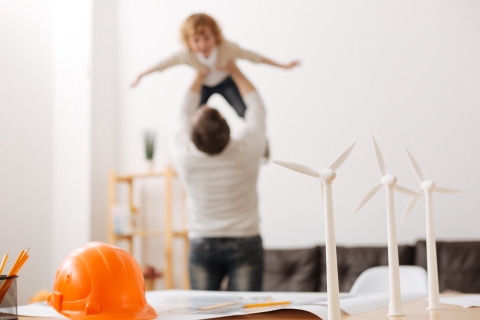Building Regulations in England & Parts L, F and O
With the transitional period now over, the updated 2022 Building Regulations Part L, Part F, and the new Part O, became legally enforceable for all new residential projects.
This is the biggest regulatory change the construction sector has seen in the last 40 years and a stepping stone in our transition away from fossil fuel systems toward decarbonised homes and the electrification of heat - and ultimately, the Future Homes Standard. This shift will impact the way we design buildings and specify technologies.
Have you decided which technologies to specify to achieve compliance for your next residential project?
The new English Building Regulations came into law on the 15th of June 2021. For projects with existing planning permission there is one year transitional arrangements period that applies on plot-by plot basis.
The updated Part L outlines the four compliance metrics for new developments: primary energy target, carbon emissions target, fabric energy efficiency target, and minimum standards for building fabric and building services.
The ventilation system choice under the updated Part F is linked to aritightness as we look to increase indoor air quality. New Part O offers modelling to help mitigate the risk of overheating in buildings.
We designed a simple guide to the changes to Part L and Part F, and the new Part O, and discuss what they may mean for your project.
Our range of HVAC solutions aim to provide future proof technologies to building projects over various sectors.
Request our presentation on Building Regulation changes that answer the most frequently asked questions.
Latest News
Our news section cover building regulations, what the changes to Part L, F, and the new Part of O entail, and what this means for HVAC specification.

What are the barriers to increasing uptake of low carbon heating technologies?
5
With heat accounting for approximately a third of the UK’s greenhouse emissions, the decarbonisation and electrification of heating in homes will play a central role in achieving the UK’s 2050 net-zero carbon target. The transition from prolific use of high carbon fossil fuels to low carbon heating presents the industry with many challenges. The relatively short space of time in which environmental targets need to be achieved means that the electrification of heating must be accomplished at great speed.
How can reasonable distribution of cost support the decarbonisation of heat?
We all have a role to play in meeting climate targets. The reasonable distribution of the cost of decarbonisation of heat could support a smooth transition to a low carbon economy. A considered approach could help navigate issues around fuel poverty and accelerate the uptake of a low carbon solution.

How to improve your heating efficiency this winter
‘When do you switch your heating on?’ It’s a question that seems to rear its head every autumn, with the beginning of October being a common (but by no means definitive) answer. Whether you usually switch on your heating as early as September or try to hold out till late November, however, the colder seasons often still mean an increase in costs due to heating our homes.











